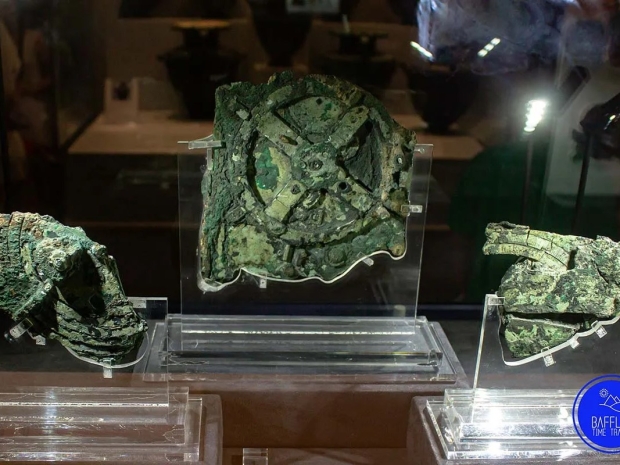Using statistical modelling techniques developed for analysing gravitational waves, they determined the likely number of holes in one of the broken rings of the mechanism.
The Glasgow team's findings provide fresh evidence that one of the Antikythera mechanism's components was most likely used to track the Greek lunar year.
Decades of study have established that the mechanism dates back to the second century BC and functioned as a kind of hand-operated mechanical computer. Exterior dials connected to internal gears allowed users to accurately predict eclipses and calculate planets' astronomical positions, surpassing any other known contemporary device.
In 2020, new X-ray images of the mechanism's calendar ring revealed regularly spaced holes beneath it. Since the ring was broken and incomplete, the original number of holes remained uncertain. Initial analysis suggested somewhere between 347 and 367 holes.
In a recent paper published in the Horological Journal, the Glasgow boffins employed two statistical analysis techniques to uncover more details about the calendar ring. They found that the ring is vastly more likely to have had 354 holes, corresponding to the lunar calendar, rather than 365 holes (which would align with the Egyptian calendar).
The analysis also indicates that 354 holes are hundreds of times more probable than the 360-hole ring, suggested.
Professor Graham Woan, from the University of Glasgow's School of Physics & Astronomy, used Bayesian analysis to calculate the likely number of holes. His results strongly support either 354 or 355 holes in the calendar ring.
Simultaneously, Dr. Joseph Bayley, from the University's Institute for Gravitational Research, adapted techniques used for analysing signals from the LIGO gravitational wave detectors. Their comprehensive probabilistic results confirm that the ring most likely contained 354 or 355 holes in a circle with a radius of 77.1 mm, with an uncertainty of about 1/3 mm. Remarkably, the holes were precisely positioned, with an average radial variation of just 0.028 mm between each hole.
Bayley emphasises that the dual techniques significantly increase the likelihood that the calendar ring tracked the lunar calendar. The Antikythera mechanism's precision reflects the care and accurate measurement techniques employed by ancient Greek craftspeople.
Professor Woan concludes, "It's a neat symmetry that we've adapted techniques used to study the universe today to understand more about a mechanism that helped people keep track of the heavens nearly two millennia ago."

